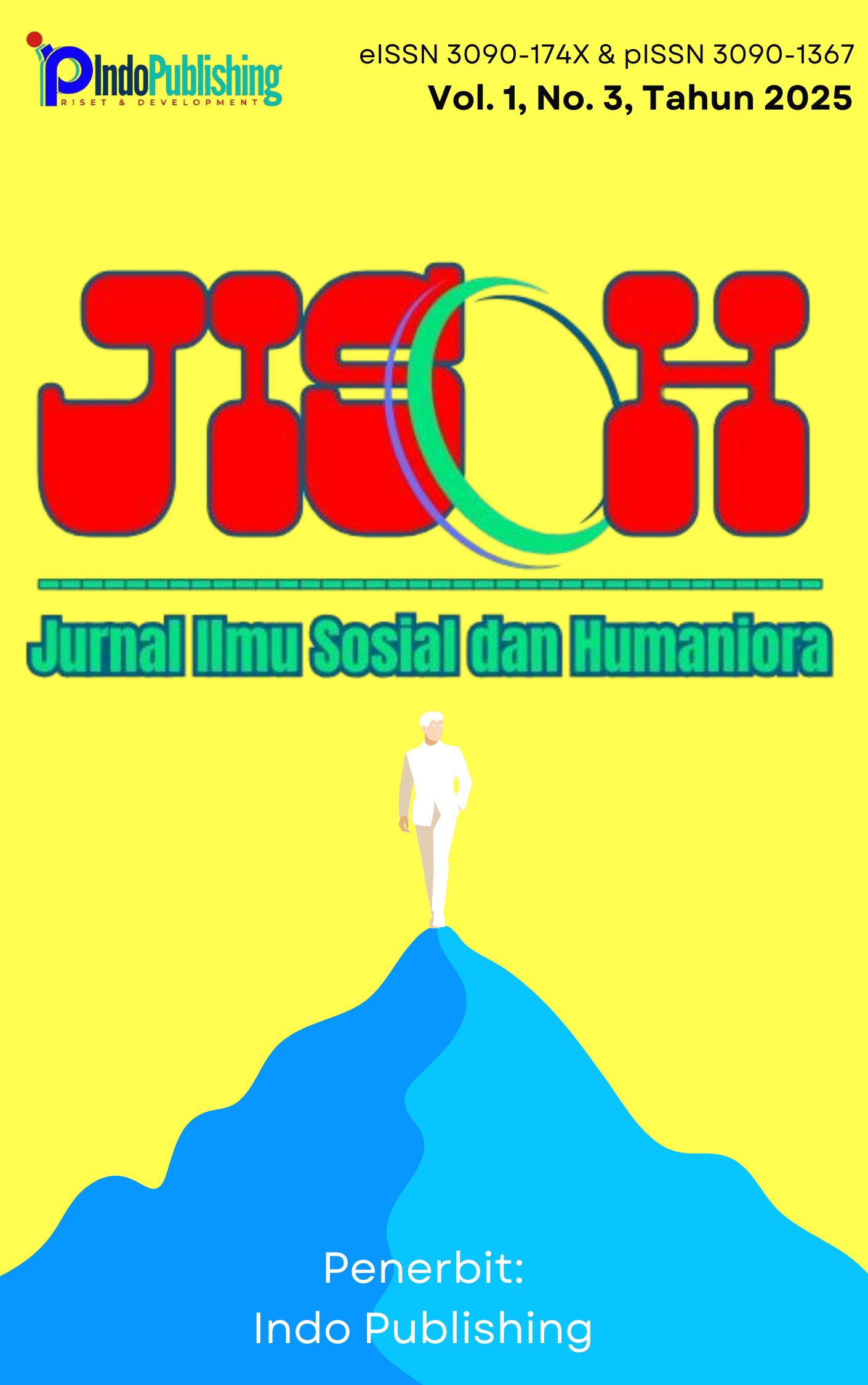Pengaruh Film Capernaum sebagai Media Belajar Terhadap Sikap Tanggung Jawab Ekonomi
DOI:
https://doi.org/10.63822/t325tn43Keywords:
Capernaum Film, Learning Media, Economic ResponsibilityAbstract
This research aims to explore the influence of the film Capernaum (2018) as a learning medium on students’ sense of economic responsibility. The film was chosen due to its realistic portrayal of children living in extreme poverty with limited access to education, making it a relevant tool to foster empathy and economic awareness among adolescents. The study uses a qualitative approach with an intrinsic case study design, focusing on students from SMK Persada Husada Indonesia. Data were collected through in-depth interviews, focus group discussions (FGDs), direct observations, documentation, and data triangulation to enhance the validity and depth of the findings. A total of ten students participated in the data collection process, but only three key respondents were selected for detailed analysis based on their depth of understanding regarding the research theme. The results indicate that Capernaum effectively raises students' awareness about economic responsibility, reflected in increased concern for family welfare, motivation for independence, and a stronger sense of not wanting to become an economic burden. The main character, Zain, serves as a powerful representation of resilience and the drive to survive amidst hardship, leaving a strong emotional impact on students. The film proves to be an effective educational medium by delivering moral messages through compelling visuals and emotional narratives.
Downloads
References
Anderson.(2001). A taxonomy for learning, teaching, and assessing: A revision of Bloom’s taxonomy of educational objectives. Longman.
Arikunto.(2010). Prosedur penelitian: Suatu pendekatan praktik. Rineka Cipta.
Arsyad, A. (2011). Media pembelajaran. RajaGrafindo Persada
Ayati,A.N(2021).Realisasi hak anak dalam film Capernaum karya Nadine Labaki (Kajian strukturalisme obyektif). Az-Zahra: Journal of Gender and Family Studies, 1(2), 89–105.
Creswell, J. W. (2013). Qualitative inquiry and research design: Choosing among five approaches (3rd ed.). SAGE Publications.
Creswell, J (2018). Qualitative inquiry and research design: Choosing among five approaches (4th ed.). SAGE Publications.
Hasan, S. (2013). Pendidikan ekonomi: Menumbuhkan karakter bertanggung jawab dan mandiri. Rajawali Pers.
Krathwohl, (1964). Taxonomy of educational objectives: Handbook II: Affective domain. David McKay.
Krueger, (2015). Focus groups: A practical guide for applied research. SAGE Publications.
Linawati. (2022). Edukasi literasi keuangan bagi siswa SMK Negeri Wajo. Jurnal Pengabdian Kepada Masyarakat Abdiku: Jurnal Pengabdian dan Pemberdayaan Masyarakat, 4(2), 445–452.
Mardhotilah, S. (2023). Pengaruh literasi keuangan terhadap perilaku konsumtif Generasi Z di Kecamatan Petarukan Kabupaten Pemalang (Skripsi). Universitas Islam Negeri Walisongo.
Miles, M. B., Huberman, A. M., & Saldaña, J. (2014). Qualitative data analysis: A methods sourcebook (3rd ed.). SAGE Publications.
Moleong, L. J. (2017). Metodologi penelitian kualitatif. Remaja Rosdakarya.
Munari, B. (2014). The role of visual narratives in education. Corraini Edizioni.
Nawawi, H. (2012). Hbidang sosial. Gadjah Mada University Press.
Notoatmodjo, S. (2009). Pendidikan dan perilaku kesehatan. Rineka Cipta.
Nurgiyantoro, B. (2010). Sastra anak: Pengantar pemahaman dunia anak. Gadjah Mada University Press.
Patton, M. Q. (2015). Qualitative research & evaluation methods (4th ed.). SAGE Publications.
Saputro,B.(2020). Media visual dalam pembelajaran: Membentuk kepekaan sosial siswa melalui film. Jurnal Pendidikan dan Sosial Humaniora, 8(1), 25–32.
Simpson, E. J. (1972). The classification of educational objectives in the psychomotor domain. Gryphon House.
Sugiyono. (2017). Metode penelitian kualitatif, kuantitatif, dan R&D. Alfabeta.
Sugiyono. (2018). Metode penelitian kualitatif, kuantitatif, dan R&D. Alfabeta.
Susanto, H.(2013).Pendidikan karakter: Konsep dan implementasi. Bumi Aksara.
Suyanto, S., & Asep, J. (2014). Menjadi guru profesional: Strategi meningkatkan kualitas pembelajaran di era global. Esensi Erlangga.
UNHCR. (2017). Child labour within the Syrian refugee response: A regional strategic framework for action.
Widayati, S. (2018). Film sebagai media edukasi karakter sosial. Jurnal Pendidikan Karakter, 8(2).
Yin, R. K. (2018). Case study research and applications: Design and methods (6th ed.). SAGE Publications.
Downloads
Published
Issue
Section
License
Copyright (c) 2025 Rabina Talia, Supriyadi, Hafifi (Author)

This work is licensed under a Creative Commons Attribution-NonCommercial-ShareAlike 4.0 International License.










